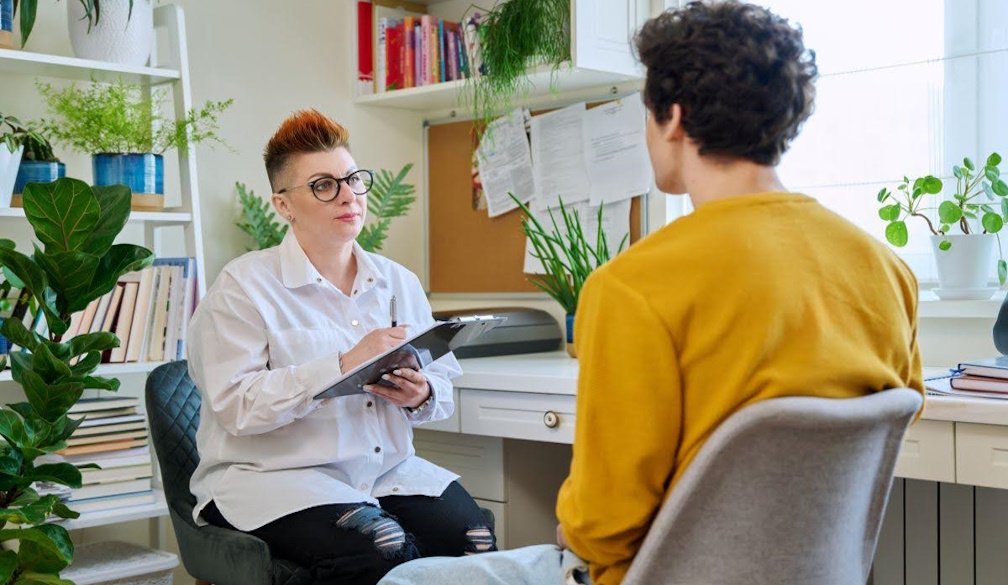The gene therapy revolution is here. Medicine is scrambling to keep pace
- Written by Elizabeth Finkel, Vice-Chancellor's Fellow, La Trobe University
This article is an edited extract from Elizabeth Finkel’s address Gene therapy: cure but at what cost? to the National Press Club June 5 2019.
We’re publishing it as part of our occasional series Zoom Out, where authors explore key ideas in science and technology in the broader context of society and humanity.
Gene therapy – for so long something that belonged to the future – has just hit the streets.
A couple of weeks back, you might have picked up a headline alerting us to the most expensive drug in history – a one off gene therapy cure for spinal muscular atrophy. Novartis have priced the drug Zolgensma at A$3 million (US$2.1 million).
Traditionally a parent of a baby with spinal muscular atrophy was told: take your baby home and love her or him. Have no false hope, the baby will die paralysed and unable to eat or talk by the age of two.
What’s the narrative going to be now? There is a cure but it costs A$3 million.
I think we are in for some poignant dilemmas.
Read more: Boyer Lectures: gene therapy is still in its infancy but the future looks promising
‘Heads up’ from a mother
The person who gave me a recent “heads up” on the gene therapy revolution was not a scientist. She is the mother of two sick children.
I met Megan Donnell last August 29th at a Melbourne startup conference called “Above All Human”.
Megan Donnell is a person who strikes you with her vibrancy and charisma. What you can’t immediately see is her life’s greatest tragedy and her life’s greatest mission.
Both of her children suffer from the rare genetic illness Sanfilippo syndrome. They lack a gene for breaking down heparin sulphate, a sugar that holds proteins in place in the matrix between cells. The high levels of the sugar poison the organs, particularly the brain. In the normal course of the disease, the children die in their teens, paralysed, unable to talk or eat.
When Megan Donnell’s kids were diagnosed at the ages of four and two, she was told “do not have false hope”. She didn’t listen.
The one time IT business manager started the Sanfilippo Childrens’ Foundation, raised a million dollars and invested in a start-up based in Ohio that was trialling gene therapy to treat the disease. Part of the deal was that the company would conduct trials in Australia as well as in the US and Spain. So far 14 children have been treated worldwide.
I’d missed a revolution
Megan Donnell’s story stunned me.
I’d written two books about coming medical revolutions: one on stem cells, the other on genomics. But when a medical revolution actually arrived, I’d missed it. It was all the more remarkable because for six years I’d been the editor of a popular science magazine – Cosmos.
We scanned the media releases for hot papers each week but gene therapy never came up on our radar.
Probably because we’d been dazzled by CRISPR – the powerful technique that can edit the DNA of everything from mosquitoes to man. But CRISPR has barely entered clinical trials.
Read more: What is CRISPR gene editing, and how does it work?
Meanwhile there are already five gene therapy products on the market. And with 750 working their way through the pipeline, the US Federal Drug Administration (FDA) predicts that by 2025 between 10-20 gene therapy treatments will be added to the market each year.
Some of the gene therapies are having incredible effects.
The star example is the Novartis treatment for spinal muscular atrophy. Untreated babies die paralysed by the age of two. But those treated with Zolgensma have now reached the age of four and some are walking and dancing.
In 2017, the FDA approved Luxturna, now marketed by Roche. This gene therapy can restore sight to children suffering from a form of retinal blindness that begins months after birth.
For the first time I can recall, medical researchers are using a four letter word for some diseases: cure.
These treatments appear to have fixed the underlying conditions. Especially when they are given early. Indeed spinal muscular atrophy treatment is being offered to babies a few month old – before their motor neurons have started to wither.
30 years in the making
These gene therapy treatments have been over thirty years in the making. And the saga of their journey to the clinic, I suspect, reveals some common plot lines.
The potential of gene therapy, was obvious as soon Marshall Nirenberg cracked the genetic code back in the 1960s.
The New York Times opined: “The science of biology has reached a new frontier”, leading to “a revolution far greater in its potential significance than the atomic or hydrogen bomb.”
In a 1967 editorial for Science, Nirenberg wrote:
This knowledge will greatly influence man’s future, for man then will have the power to shape his own biological destiny.
But if the end goal was obvious, the pitfalls were not.
What made the dream of gene therapy possible was viruses. They’ve evolved to invade our cells and sneak their DNA in next to our own, so they can be propagated by our cellular machinery.
Throughout the 1980s, genetic engineers learned to splice human DNA into the viruses.
Like tiny space ships, they carried the human DNA as part of their payload.
By 1990, researchers attempted the first gene therapy trial in a human. It was to treat two children with a dysfunctional immune system, a disease known as severe combined immunodeficiency (SCID).
The results were hardly miraculous but they were promising. Researchers raced to bring more potent viruses to the clinic.
Children have died
In 1999, 18 year old Jesse Gelsinger paid the price.
He had volunteered to try gene therapy for his inherited condition: ornithine transcarbamylase deficiency. It meant he couldn’t break down ammonia, a waste product of dietary protein. But his condition was largely under control through medication and watching his diet.
Four days after his treatment at the University of Pennsylvania, Jesse was dead – a result of a massive immune reaction to the trillions of adenovirus particles introduced into his body. These are the same viruses that cause the common cold.
Tragedy struck again in 2003. This one involved so-called “bubble boys”.
They too carried an immune deficiency, X-SCID, which saw them confined to sterile bubble; a common cold can be fatal. This time round the gene therapy appeared far more effective. But within a few years of treatment, five of 20 boys developed leukaemia. The virus (gamma retrovirus) had activated a cancer-causing gene.
The two tragedies set the field back. Many researchers found it very hard to get funding.
But the huge clinical potential kept others going.
The key was to keep re-engineering the viral vectors.
It was a project that reminds me of the evolution of powered flight. From the biplanes that the Wright brothers flew in 1903 to the epic Apollo 11 flight in 1963, took 60 years.
The virus engineers have been a lot faster.
Use engineered viruses
Ten years after the disaster of the leukaemia-causing viruses, researchers had re-engineered so-called lenti viruses not to activate cancer genes. They had also found other viruses that did not provoke catastrophic immune responses.
Instead of the adenovirus, they discovered its mild-mannered partner – known as adeno associated virus (AAV). There’s a whole zoo of these AAVs and some species are particularly good at targeting specific organs.
It is this new generation of vectors that are responsible for the results we are witnessing now. The AAV 9 vector for instance can cross into the brain, and that’s the one used to treat spinal muscular atrophy.
Turning the table on viruses, and hacking into their code: this is the bit that particularly fascinates me in telling the story of gene therapy.
But another intriguing aspect is that, contrary to long held wisdom, we are seeing big pharma galloping in to treat rare diseases.
In the US, the spinal muscular atrophy market is probably around 400 babies per year. Luxturna might treat 2,000 cases of blindness a year.
It’s not the sort of market size that would bring joy to investors. But clearly the companies think it’s worth their while.
For one thing, the FDA has provided incentives for rare, so-called “orphan diseases” – fast-tracking their passage thought the tangled regulatory maze.
And there is a convincing business case. If gene therapy is a one shot cure then it really may end up saving health systems money.
That justifies, they say, some of the most extraordinary prices for a drug you’ve ever heard of.
Of course, all this relies on the treatments being one time cures.
And though the patients seem to be cured, whether or not the treatments last a lifetime remains to be seen.
The situation in Australia
Historically, this country has been a world leader when it comes to bargaining down exorbitantly priced cures.
In 2013 when the drugs for curing Hepatitis C first came out, the price was around A$100,000 for a 12 week course. But in Australia, all 230,000 of those living with Hepatitis C will be treated for the lowest price in the world. Prices are much higher in the US.
Read more: Australia leads the world in hepatitis C treatment – what's behind its success?
Greg Dore at the Kirby Institute of NSW participated in Australia’s Hepatitis C pricing discussions, and believes our model will work for the new gene therapy drugs – notwithstanding their eye-popping price tags – and the fact that the patient populations for these rare genetic diseases will be tiny.
However, the real reason companies are getting into gene therapy is not just to treat rare disease. It’s because they realise this technology will be a game changer for medicine.
They have already entered the field of cancer with a gene therapy approved for acute lymphoblastic leukaemia – CAR-T cells. Health Minister Greg Hunt announced this year the government will pay the cost (around A$500,000 per treatment).
But after cancer, what then?
If you have a vector than can take a gene to the brain and cure spinal muscular atrophy, what else could you cure. Alzheimer’s disease, strokes?
Australian researchers are jostling to be part of the gene therapy revolution.
Paediatrician Ian Alexander together with virologist Leszek Lisowksi are engineering the next generation of vectors in their labs at The Children’s Hospital at Westmead, Sydney. They are designing them to home efficiently to specific organs and produce therapeutic levels of proteins.
Curiously it turns out that a major bottleneck is scaling up the production of these exquisitely engineered viruses. Who’d have thought there’d be a problem churning out the most abundant organism on the planet?
Read more: Explainer: how do drugs get from the point of discovery to the pharmacy shelf?
Researcher David Parsons in Adelaide is refining methods to deliver vectors across the viscous mucus of children with cystic fibrosis.
Scientist John Rasco in Sydney is a pioneer when it comes to treating patients with gene therapy, having been a part of international trials treating patients with beta thalassemia.
Medical researcher Elizabeth Rakoczy in Perth is developing a treatment for macular degeneration.
And Alan Trounson, who spent six years at the helm of the world biggest stem cell institute, the California Institute for Regenerative Medicine, is advancing a technology to develop off the shelf, universally compatible, CAR-T cells, to attack ovarian cancer.
One thing is for sure: medicine is set for a major disruption from the arrival of gene therapy.
As we enter an era, where once incurable diseases become curable; be prepared for some challenging debates about how to pay for gene therapy and the value of a human life.
Authors: Elizabeth Finkel, Vice-Chancellor's Fellow, La Trobe University



















